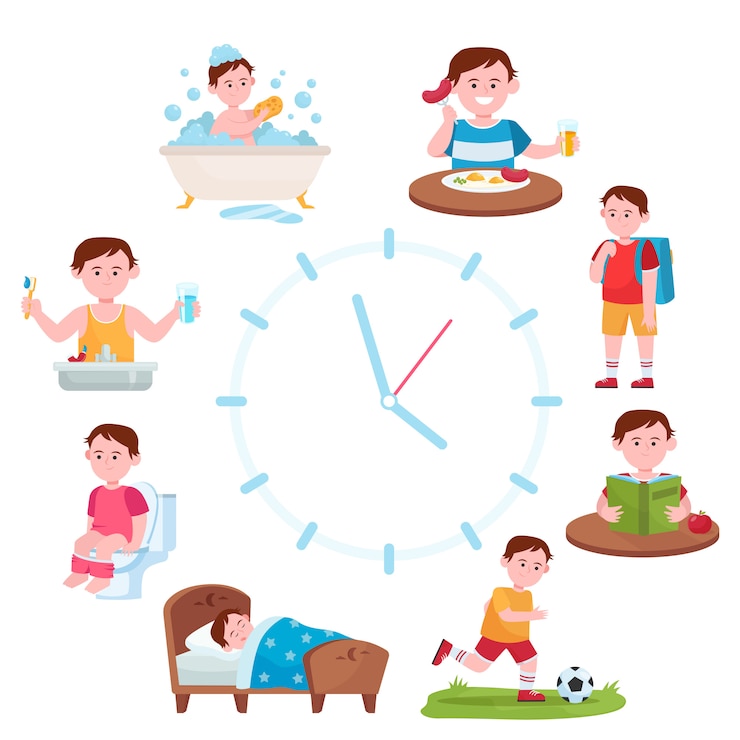
Discover the most effective phrase to use when stepping in during kids’ fights or everyday family conflicts.
—
**Table of Contents**
Emotions in your family might be running high right now, just as they are in mine.
“Stop it!”
“Mom, she said she hated me!”
“Well, I never want to play with you again anyway!”
And all of this unfolded in just 30 seconds outside the bathroom as the kids argued.
With everyone at home all the time, stress levels are through the roof, making it challenging for everyone, regardless of age, to stay calm and communicate well.
We’ve learned that when our emotions swell, our ability to think logically shrinks. This happens because the emotional part of the brain (the amygdala) takes over, sidelining the thinking part (the prefrontal cortex). It’s why your mind goes blank when you’re nervous.
Kids aren’t immune to the stress surrounding us. As predictable routines that keep them grounded disappear, sibling squabbles seem to be at an all-time high.
There’s a phrase that has been incredibly helpful for me during this time at home with my family. I want to share it with you.
Are you raising a strong-willed child? I have a free guide just for you.
In dealing with children fighting—or in any situation where you’re aiming for positive communication—there’s a key skill I learned during my family therapy training that’s like magic.
This approach is effective because it steers clear of blaming and criticism, which often makes the other person defensive. It also helps express the needs involved—a crucial, yet often overlooked, aspect of resolving conflicts.
What’s great is that this method also boosts your child’s self-awareness, emotional intelligence, and problem-solving and communication skills, which are essential for healthy future relationships.
So, what’s this powerful strategy for diffusing kids’ fights?
The core idea revolves around using what’s called an “I statement,” which starts with ‘I’ rather than ‘You’—but it goes beyond just that.
There’s a specific “I statement” that works in almost any scenario with rising tensions among siblings or in family conflicts.
Addressing sibling conflict can feel daunting, which may lead to parents either avoiding intervening or rushing to solve the problem themselves. Neither approach is ideal for teaching children how to manage conflicts and communicate effectively.
The beauty of the “I statement” lies in its simplicity and effectiveness in promoting clear communication without resorting to arguments or negativity. Plus, it’s easy to remember.
Once you make this statement a habit, your brain recognizes it as a handy tool, ready to ease any sibling clashes that arise.
The magic of this phrase lies in its structure. Beginning with “I feel” focuses on the child’s perspective, rather than attacking the sibling. It then explains the reason behind their feelings and identifies the need or boundary that needs respect.
Here’s your new go-to phrase:
“I feel ________ when ________ and I need you to please _________.”
Pretty amazing, right? Check out these examples:
“I feel overwhelmed when you talk to me while I’m doing my homework and I need you to give me 10 minutes.”
“I feel angry when you call me stupid and I need you to not call me names.”
“I feel left out when you play with Sam more than me and I need some playtime with you too.”
It’s tough to respond negatively when someone is genuinely sharing their own thoughts and feelings.
This effective phrase for resolving kids’ fights (or any distress!) eases defensiveness, decreasing the chance of a reactive response, while giving the other child clear guidance for moving forward positively.
**Related Resource:** Sibling Solutions Masterclass—All the tools you need to turn sibling fighting into friendship.
We often focus on telling kids what not to do, forgetting they need guidance on what they should do.
Each child learns valuable lessons in the process.
Encouraging your child to use this phrase in rising tensions works wonders for resolving family and sibling disputes.
With continued use, you’ll soon find yourself using it instinctively. Even better, with time and practice, your kids might start using it themselves!
Enjoy a calmer home!
—
**Other Parenting Articles You Might Like:**
– 10 Insights of Remarkable Parents (from a family therapist)
– 75 Calming Techniques for Kids that work {printable}
– Positive Parenting Isn’t Working? Here are 7 eye-opening reasons Why
– 5 Ways to Raise Good Listeners (without yelling or negativity)



